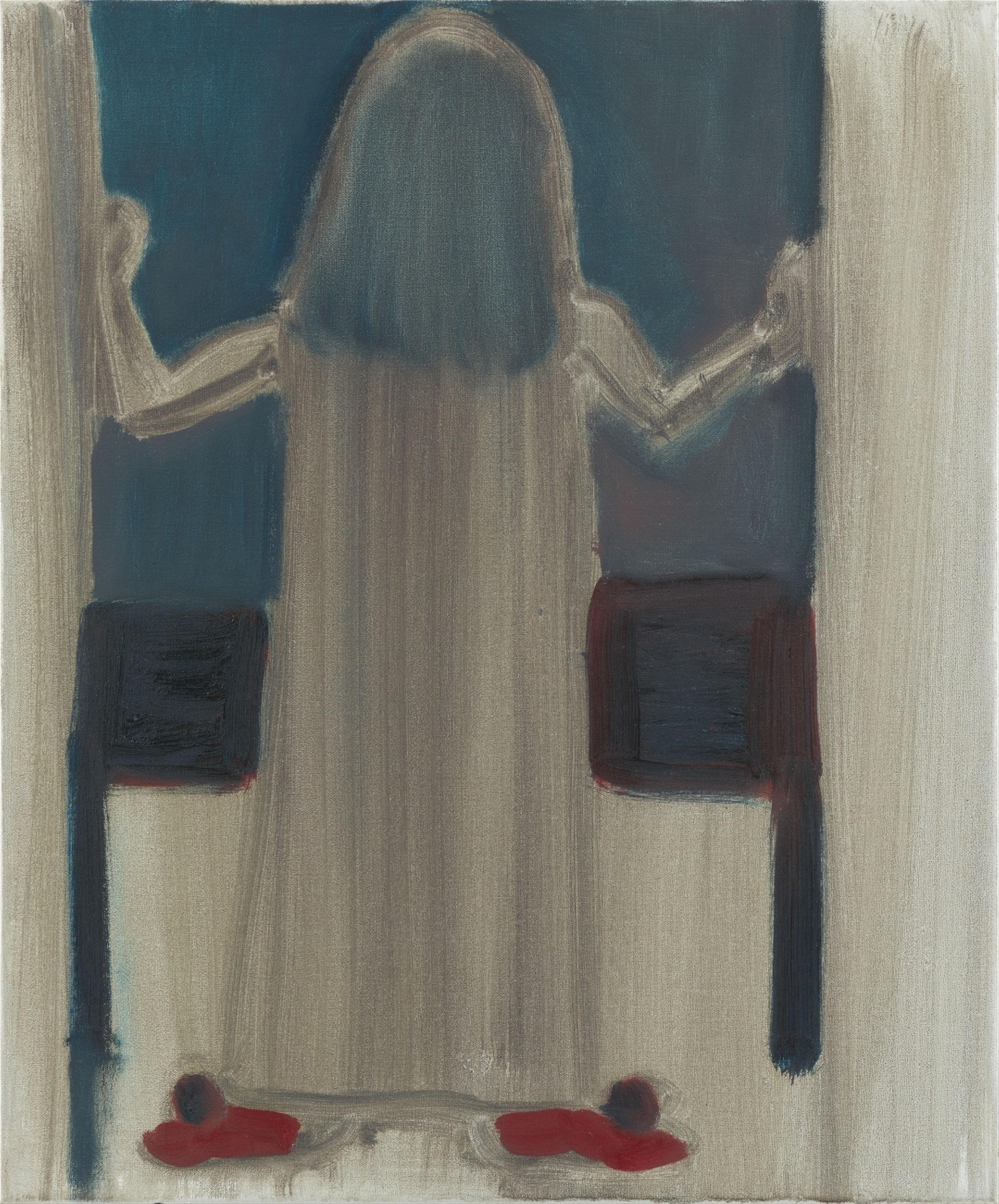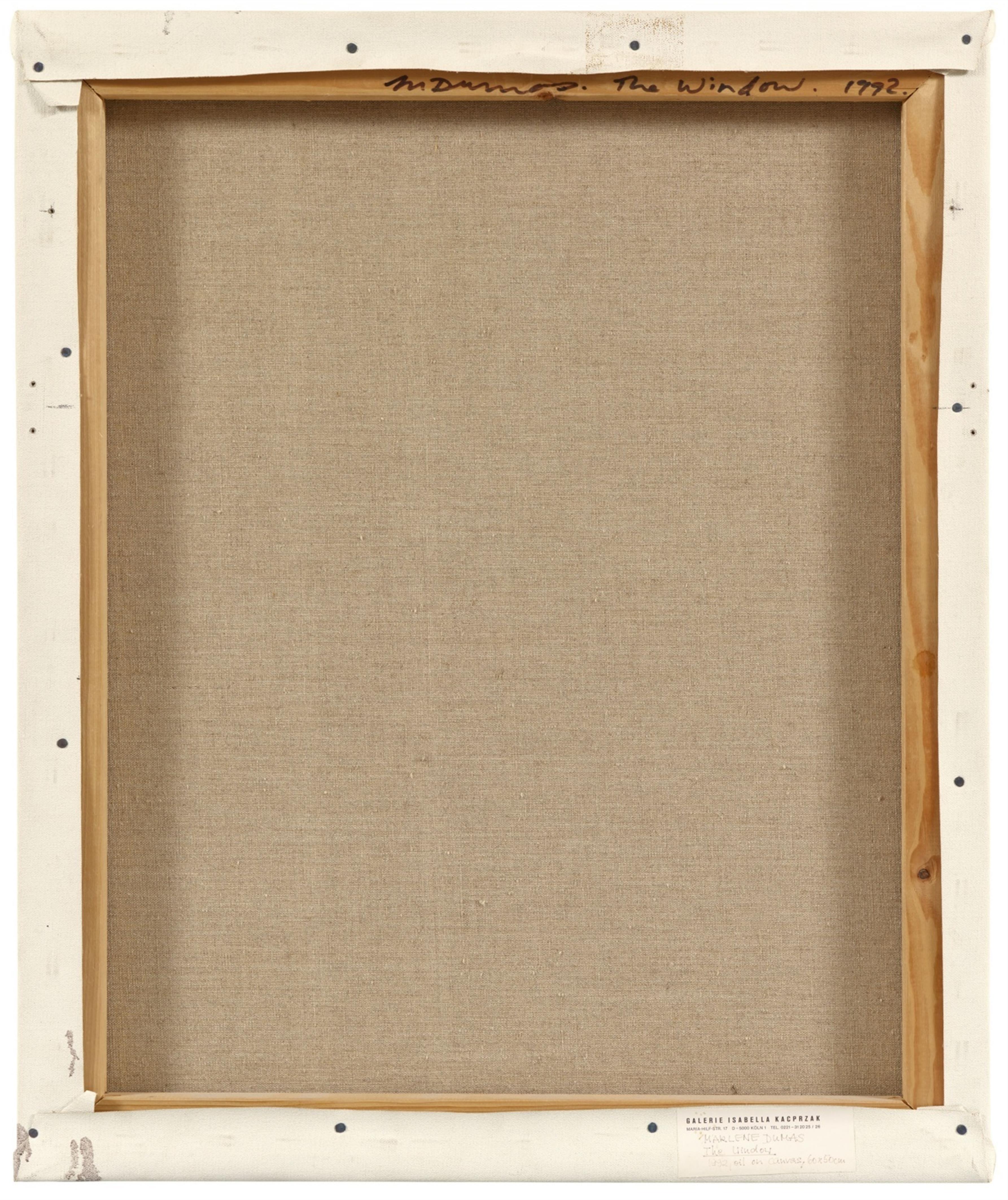Marlene Dumas
The Window
1992
Oil on canvas. 60 x 50 cm. Signed, dated and titled 'M. Dumas.The window. 1992' on stretcher verso.
“The Window” is an intimate picture with regard to both its format and depiction. A figure - maybe a woman, maybe a little girl - fills out the pictorial space vertically. She is rendered as a rear-view figure, completely averted from the viewer, and is statically positioned in an almost symmetrical picture situation. Both arms bent at the same angle, feet turned outwards, she stands firmly anchored in front of the dark square that represents the eponymous window. Thick hair falling over the shoulders and an ankle-length gown cover the entire head and body - except for the arms. The flowing fabric of the garment finds its counterpart in the vertical transparent brushstrokes with which the artist implies the surrounding space. The most striking detail, prominent through their bright colour, are the red shoes with large pompoms, which are only fully visible because of the unusual position of the feet. They embody a deep symbolic expressiveness, multiple levels of significance involving power, blood and sacrificial death, violence and passion. The same red is found in the dark areas of the window and the console table in front of it, and traces of blue also appear there.
It is an unusual and extraordinarily interesting picture for Marlene Dumas because it turns the artist's usual habits of representation upside down. Portraits are omnipresent in Dumas' oeuvre. Her mostly female sitters are present as full-length portraits as well as half or full figures. If the body is also depicted, it is usually nude. The direct view of the - literally or figuratively - naked, unprotected human being is usually the focus of her work. However, the protagonist in “The Window” eludes this gaze and any further exposure. Fully clothed, hidden and turned away, she is sheltered and withdrawn into herself - a rare representational aspect in the artist's oeuvre.
As is well known, Marlene Dumas does not employ living models or devise her subjects freely, but uses photographic models from a wide variety of print media, including images of historical paintings or her own private photos. In doing so, she isolates her motifs from their previous context and leaves them, free of predetermined references, to the gaze and associations of the viewer. As a matter of principle, and quite deliberately, Dumas keeps the message of her works in suspense; the viewer does not receive any help from her in interpreting them. In fact, the artist partially incorporates the individual biography of the viewer into her artwork. Based on the personal situation and character traits of the viewer, her works are interpreted in contradictory ways. If one person feels fear or loneliness when looking at one of her paintings, in another viewer, the same work may evoke a memory of a childhood experience linked to an individual feeling of security. In a silent and mysterious manner, “The Window” offers multiple options for the personal interpretation of the viewer.
Provenance
Galerie Isabella Kacprzak, Cologne (adhesive label verso); private collection, Luxembourg
Literature
Dominic van den Boogerd et.al., Marlene Dumas, London 1999, p. 143 with col. ill.
Exhibitions
Cologne 1992 (Galerie Isabella Kacprzak), Marlene Dumas, Ask me no questions and I will tell you no lies




